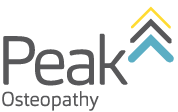Correct Lifting
Whether it’s moving house or just shifting the couch to the other side of the room awkward or heavy lifts are difficult to avoid in day to day life. Injuries from lifting incidents account for a large number of the acute pain patients we see, so how do we tackle all this without hurting ourselves? Dr Nick Brasher, osteopath, takes us through some handy hints to make moving and lifting easier on the body.
To understand how to lift correctly it is important to understand how and why incorrect techniques can hurt the body. We all know that it’s bad to slump when sitting down and a similar principle applies here. Lifting objects with a rounded or slumped back has been found to increase the pressure in the discs of the spine to a much higher level. The number one reason for this is that once you take the body forward from a “neutral” position and the centre of gravity moves forward, you begin to lose the additional structural support that comes from the joints of the spine, pelvis, the spinal ligaments and the muscles of the lower back. Instead, the majority of force is then placed through the disc and the spinal segment, leaving it dangerously susceptible to strain.
• Avoid lifting heavy objects on your own, especially those that are awkward shapes or greater than 20kg in weight;
• Ensure you have firm footing and stand with your feet spaced and close to the object;
• If you are lifting something from ground level, keep your back straight and bend at the knees and hips. Do not bend forward at the waist with the knees straight;
• On rising, tighten your glutes and lift the object with the muscles of the leg, straightening your knees in a steady, smooth motion;
• Don’t twist. Stand upright and front on to the object, moving the feet rather than twisting the torso;
• Hold the object close to the body with the arms bent. Take small steps and move slowly;
• Follow the same principles when lowering the object. This is just as important as the lift itself.
It’s also important to consider whether the lift needs to occur in the first place, or whether there is a way to make it easier. Is there a trolley or someone to help you? Can the object be broken into smaller portions? Is the pathway to where you are storing the object clear? Are you fatigued? Injury is more likely to occur when we are tired. If you are injured lifting you should consult your Osteopath to address the acute symptoms. Your Osteopath can also provide you with valuable advice on strengthening and stabilising exercises to help prevent future injuries. If you are wondering whether Osteopathy can help you or your family and friends, please don’t hesitate to contact the clinic at any time.



